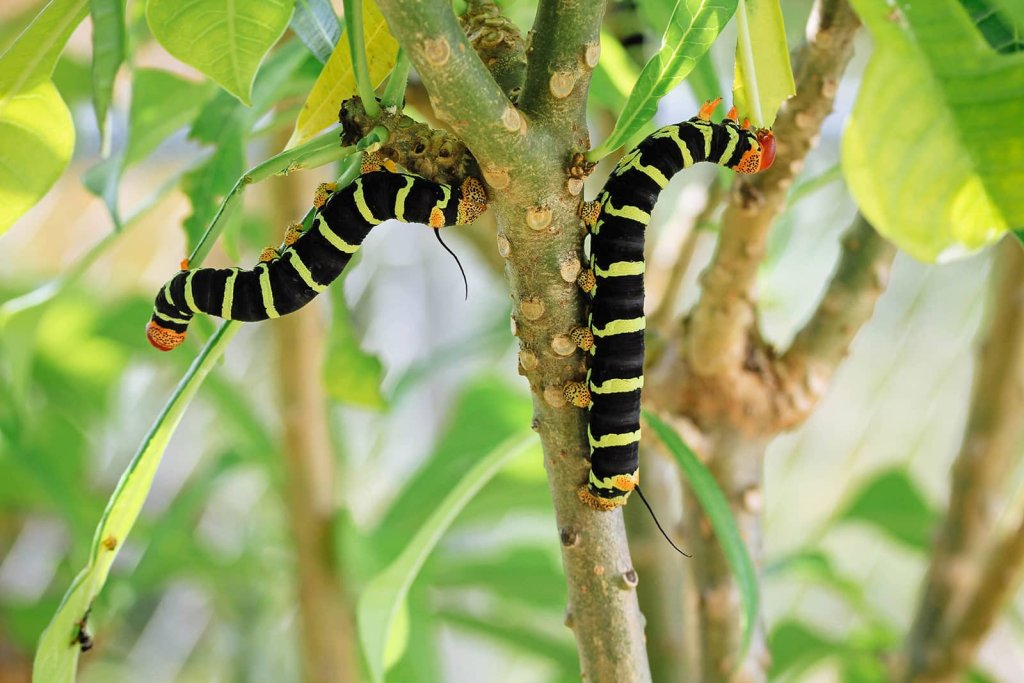Caterpillars are nothing but the larvae of beautiful butterflies and moths. Striped caterpillars are the easiest creatures to be found on the earth.
You can find them even in your garden. These are beautiful small creatures with stripes on their body and can be found on flowers and branches.
There are many different species of Caterpillars and they have different vibrant colors, patterns, and sizes.
Mostly, Caterpillars have black and white strips on their yellow-colored body.
The life of a caterpillar starts from being an egg and then transforms into a beautiful tiny larva.
A caterpillar has vibrant and bright colors such as orange, yellow and they have beautiful stripes on their body. These stripes make them identifiable from far away.
They have thick hair and spines, and they are of different sizes. They mostly reside on flower nectar so that they can such the juice out of it.
As we have just discussed that there are different species of caterpillars, each one of them has its size, color, and behavior.
Striped Caterpillars
The most common variety of caterpillars is the Striped caterpillars. The size for every caterpillar is almost the same but they do have different features and types.
To identify the striped caterpillars, you must note the color of their body, the hair covering, and their horns.
Also, there is one more point that you might not be aware of that an immature caterpillar looks very different from a mature larva.
So, you might not be able to recognize it if you do not know anything about them.
So, the most important thing to know about them is that you note their body color and body behavior so that you can distinguish between a caterpillar and a larva.
Apart from this, the colors and the stripe of a caterpillar is much important than any other thing. If you have an idea about this, then it would be easier for you to identify them from far away.
The Various Types of Caterpillars
Till now, you must have known that there is not just a single type of caterpillar, but they are hundreds of species.
Each one of them comes with its features, shapes, and sizes. If you do not know anything about them then it will be difficult for you to recognize them.
So, the most important thing is to know them beforehand so that we can move forward. So, now, we will discuss the various types of caterpillars and how we can identify them.
1. Monarch Butterfly Caterpillar
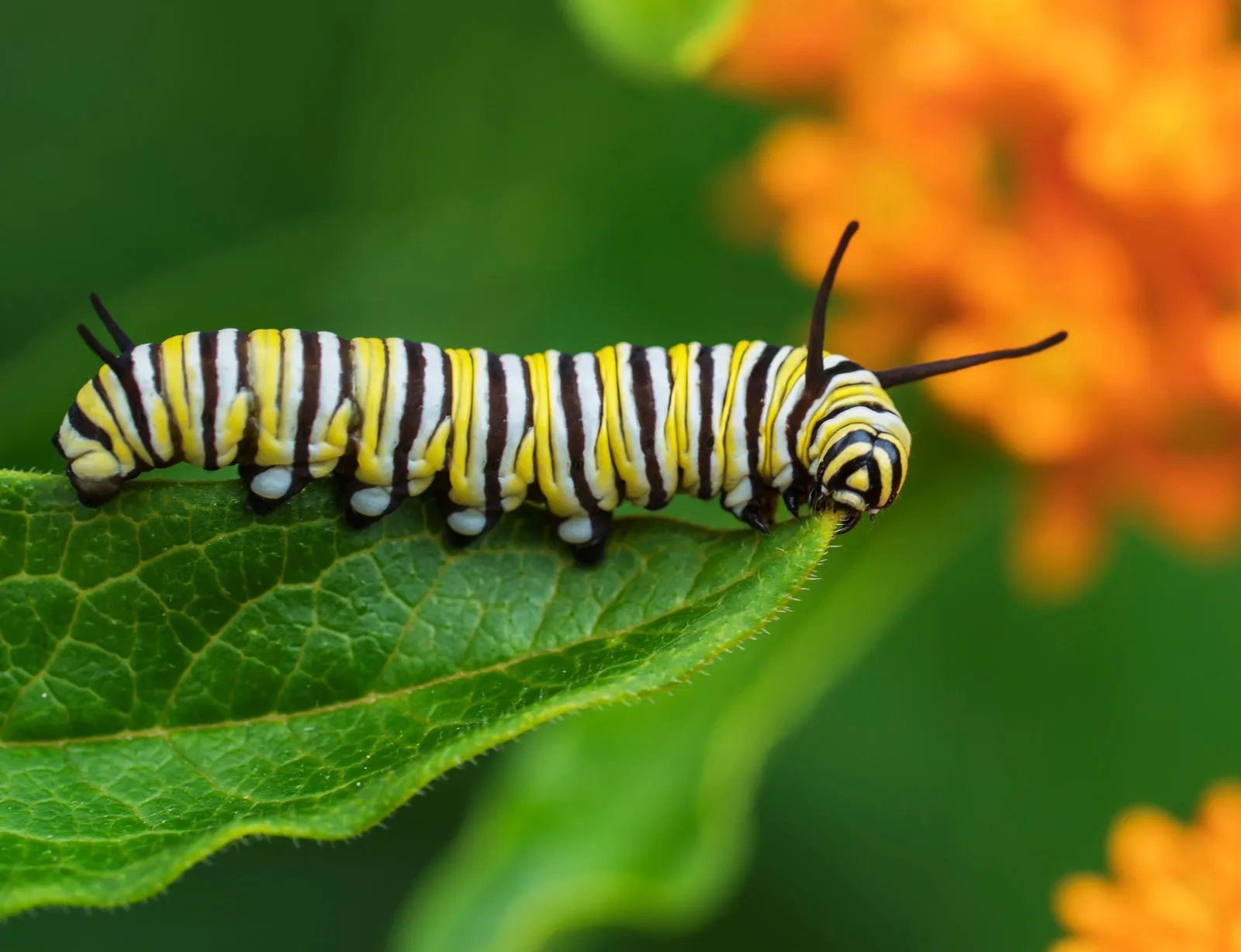
The Monarch Butterfly Caterpillar, a member of the Nymphalidae family, is a tiny insect known for its distinct appearance.
It can be identified as a black caterpillar with green stripes on its body. These caterpillars primarily feed on milkweed plants during their growth stages, earning them the nickname “Milkweed Caterpillar.”
As they mature, a pair of distinctive horns begins to grow on both sides of their body. Despite their striking appearance, Monarch Caterpillars are not harmful or poisonous. They feature white spots on their body and stumpy feet.
Typically, they grow to around 5 cm in length, with a width that expands as they age. Their transformation into beautiful butterflies reveals brown, black, and yellow colors, making them a remarkable sight in gardens.
2. Black Swallowtail Caterpillar
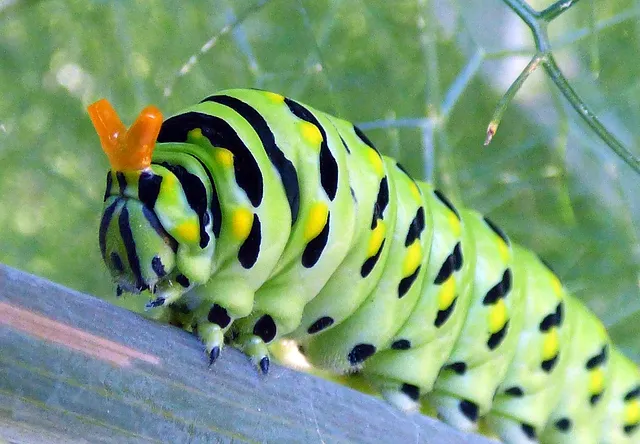
The Black Swallowtail Caterpillar shares a resemblance with the Monarch Caterpillar, featuring a black body adorned with green stripes.
These green stripes are a defining characteristic of this species. Just like its counterpart, the Black Swallowtail Caterpillar is known for its vibrant appearance.
It predominantly resides on flowers for sustenance, although it can also be found on trees.
These caterpillars have a penchant for green leaves, herbs, and various flowers. Despite their striking appearance, they are not harmful to humans.
As they undergo their transformation into butterflies, their coloration becomes a combination of yellow and black.
This striking metamorphosis from a black caterpillar with green stripes to a butterfly is a testament to the wonders of nature.
3. Cinnabar Moth Caterpillar
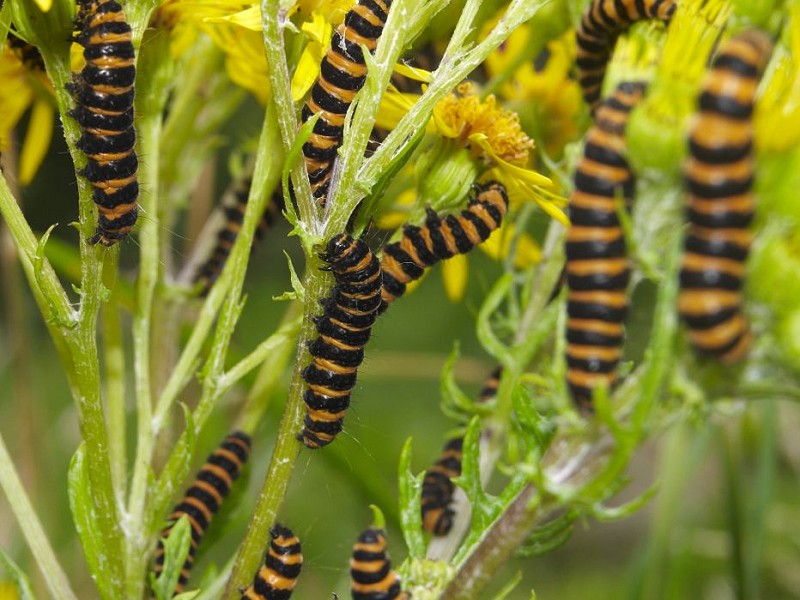
The Cinnabar Moth Caterpillar stands out for its captivating appearance.
It sports long, black and yellow stripes along its body, with a slightly reddish hue. These characteristics make it unmistakably unique, even among caterpillars.
Although it has a sticky tongue for feeding, it is not harmful to humans. These caterpillars primarily rely on flowers for their nourishment and grow quickly when they have access to abundant floral resources.
They measure approximately 3 cm in length and have a yellow body with black stripes.
As they mature into moths, their colors may vary, often showcasing black and red hues. The transformation from a black caterpillar with green stripes to a vibrant moth is a testament to the beauty and diversity of nature.
4. Queen Caterpillar
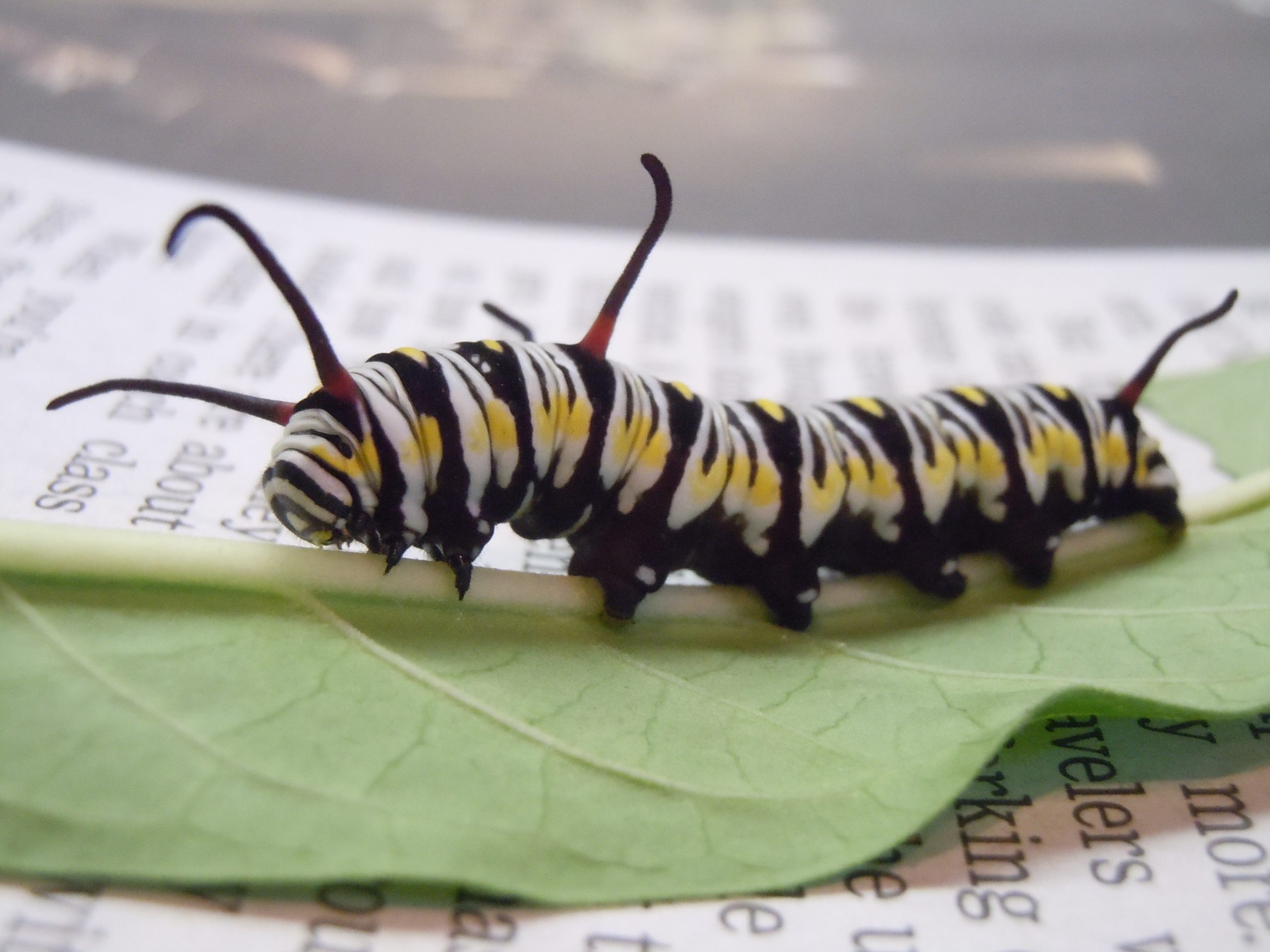
The Queen Caterpillar shares certain similarities with the Monarch Butterfly Caterpillar, particularly in terms of its distinctive black and yellow stripes.
However, it also boasts tiny white dots that add to its charm. These caterpillars typically have black heads and white rings on their body, making them easy to identify.
Found predominantly in the Southern United States, the Queen Caterpillar comes in various color variations.
As they progress through their life stages, their appearance can change, ultimately leading to the emergence of brown-colored butterflies.
These caterpillars are captivating and may resemble the Monarch Caterpillar, especially during their transformation into butterflies.
The transition from a black caterpillar with green stripes to a graceful butterfly highlights the intricate patterns and colors of nature’s creations.
5. Striped Garden Caterpillar
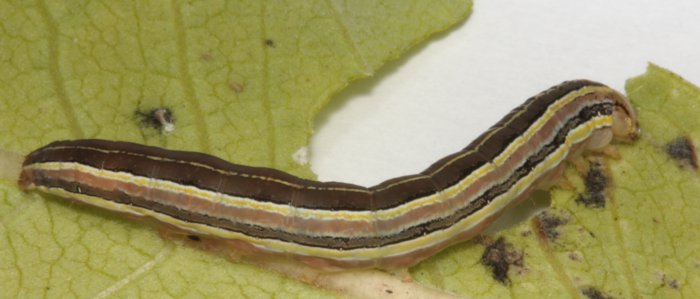
The Striped Garden Caterpillar is one of the easiest caterpillars to identify due to its distinct appearance.
It features dark green stripes that adorn its elongated body. These caterpillars are commonly found in gardens, where they primarily feed on green plants, flowers, and herbs.
They can also be spotted on plants like raspberry, mustard, and milkweed, often resembling the Monarch Caterpillar.
The black caterpillar with green stripes possesses white and yellow stripes, which make it stand out.
Typically, these caterpillars are of medium size, making them easily visible as they cling to flowers and green leaves.
Although there are different varieties of caterpillars, the Striped Garden Caterpillar’s unique markings and medium size set it apart.
Their green and black stripes are a key identifying feature, and they play an essential role in
6. Oak worm Caterpillar
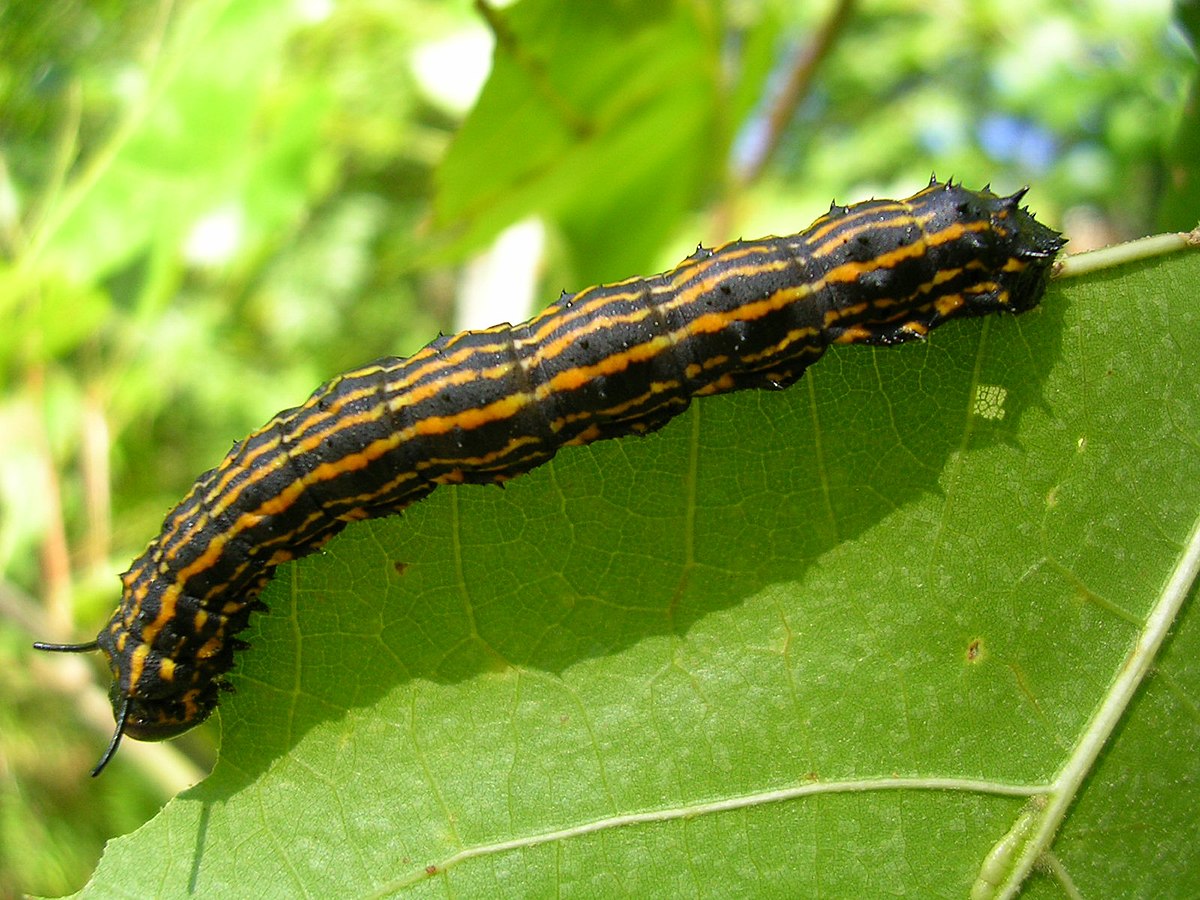
The Oak Worm Caterpillar, also referred to as the Orange Striped Caterpillar, boasts a distinctive appearance with dark, orange-colored stripes adorning its black body.
Growing to a size of approximately 5 cm, these caterpillars are known for their sticky tongues, used to extract nectar from flowers and herbs.
As they undergo their transformation into moths or butterflies, their colors shift, resulting in a captivating blend of brown, black, yellow, and prominent spots.
While they may appear intimidating due to their size, these caterpillars are harmless, making them fascinating subjects for observation.
7. Giant Caterpillar
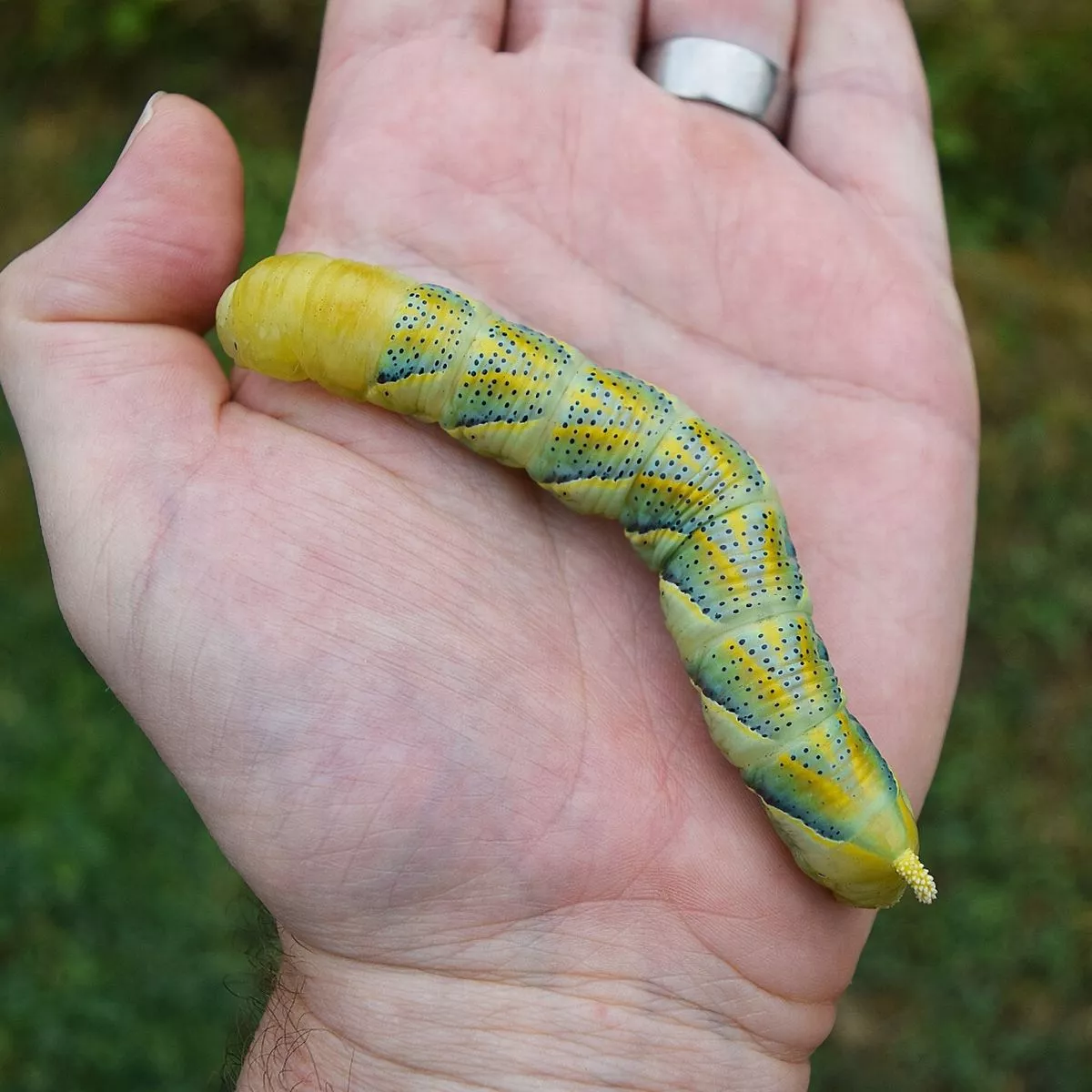
The Giant Caterpillar lives up to its name by reaching impressive sizes, often growing up to 15 cm.
Recognizable by its black body covered in tiny spots, it features thick, long hair that can feel a bit rough if touched.
During the metamorphosis into giant butterflies, their colors undergo a striking transformation, resulting in a mesmerizing display of mixed hues.
Although their size may be intimidating to some, these caterpillars are not harmful, allowing enthusiasts to approach and witness their captivating transformation up close.
8. Sphinx Caterpillar
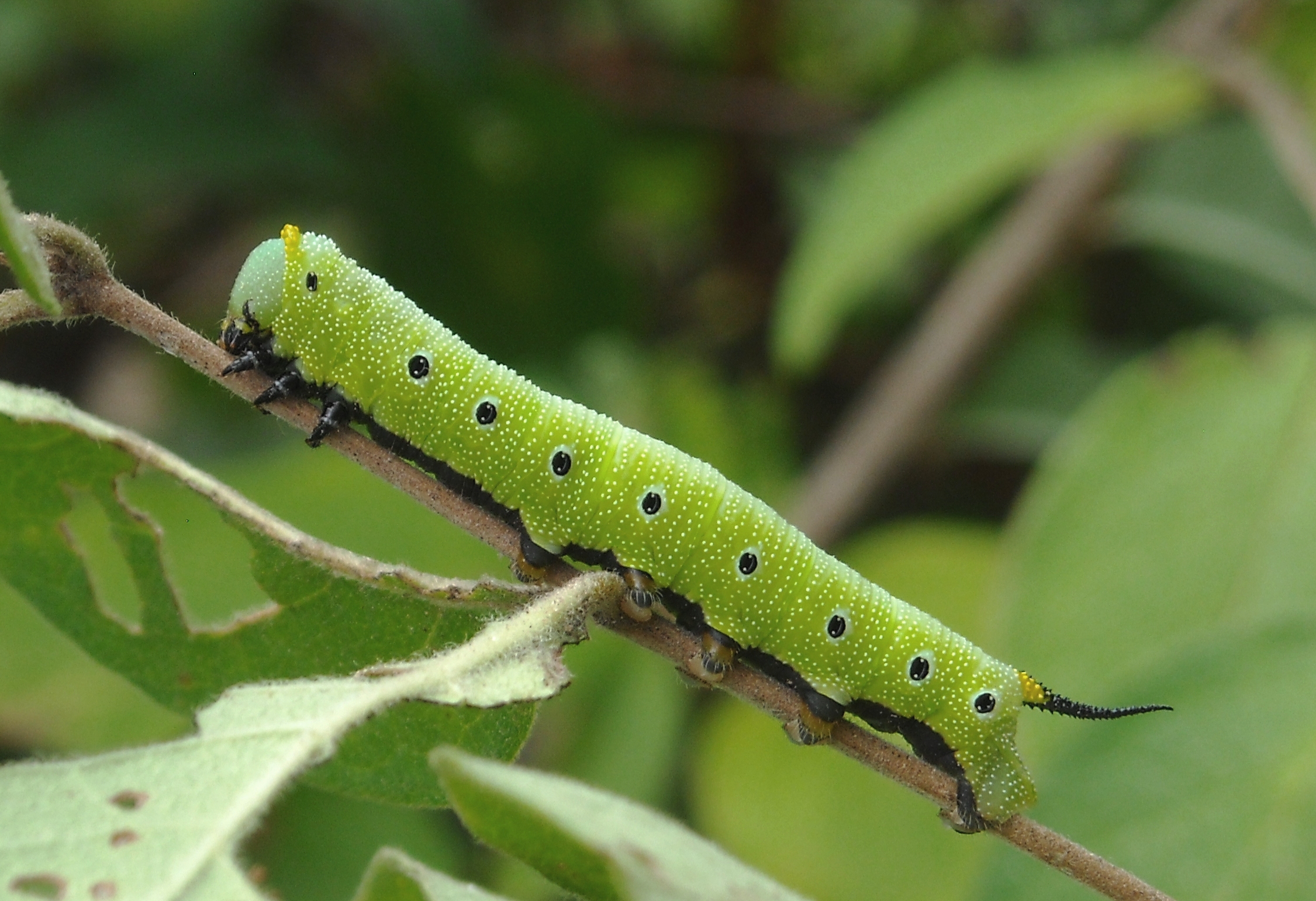
Sphinx Caterpillars are easily identified by their distinctive white stripes and thick hair.
Some species of this caterpillar display yellow stripes on their body.
What sets them apart is the unique pattern of spots adorning their bodies, which remain consistent during their transformation into butterflies.
Caterpillars often share similarities, but the Sphinx Caterpillar’s body structure and striking coloration help enthusiasts distinguish them from other caterpillar species.
9. Zebra Caterpillar
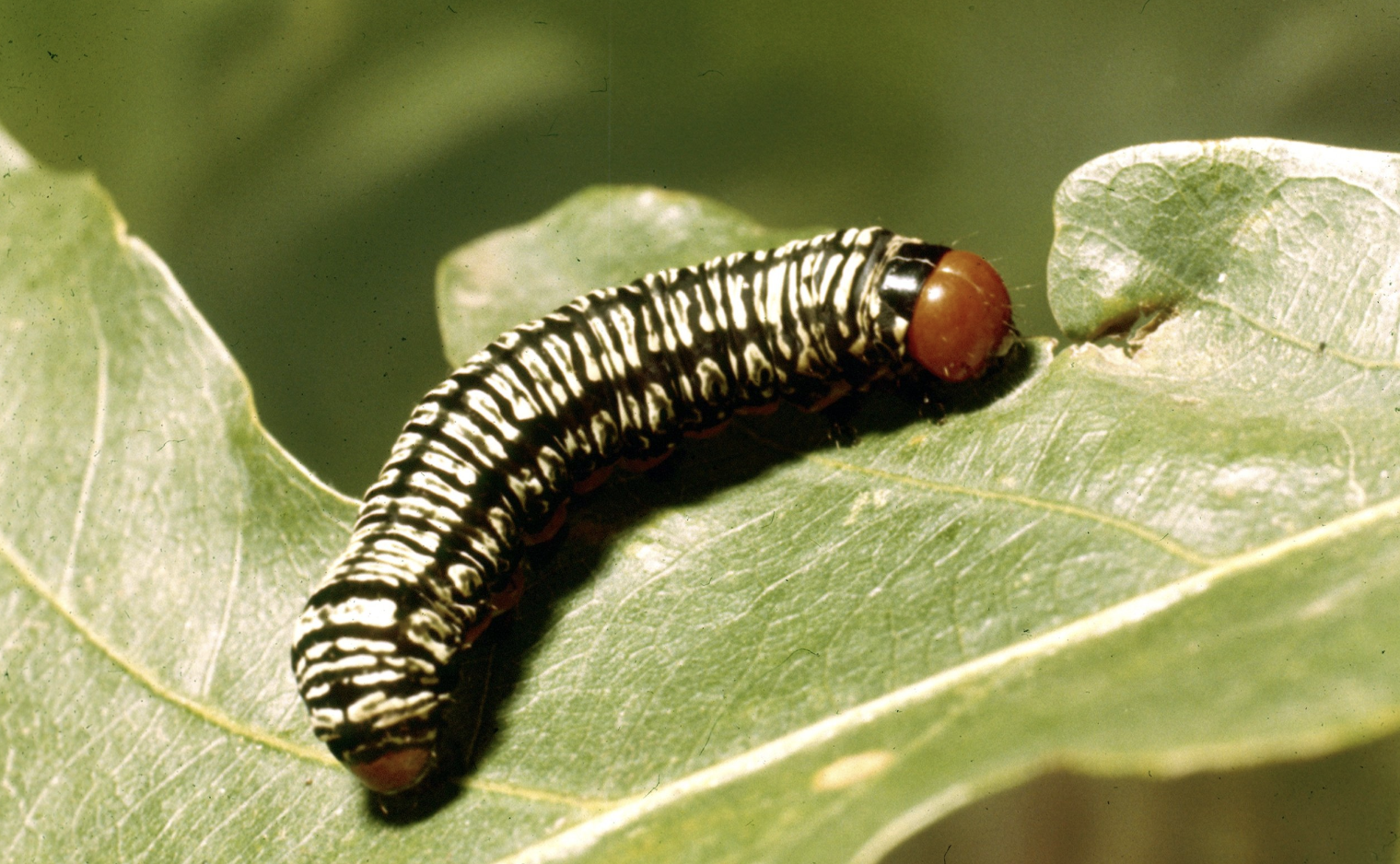
The Zebra Caterpillar earns its name thanks to the striking zebra-like pattern on its black body, featuring bold white and black stripes.
Some variations of this species exhibit yellow stripes instead of white. To differentiate them from other caterpillars, look for their brown head and brightly colored legs.
These caterpillars are often spotted making their way through cabbage leaves, a favored habitat.
As they mature into larvae and ultimately butterflies, their colors become more vibrant, creating a captivating spectacle in gardens and natural settings.
10. Brown Hooded Owlet Striped Caterpillar
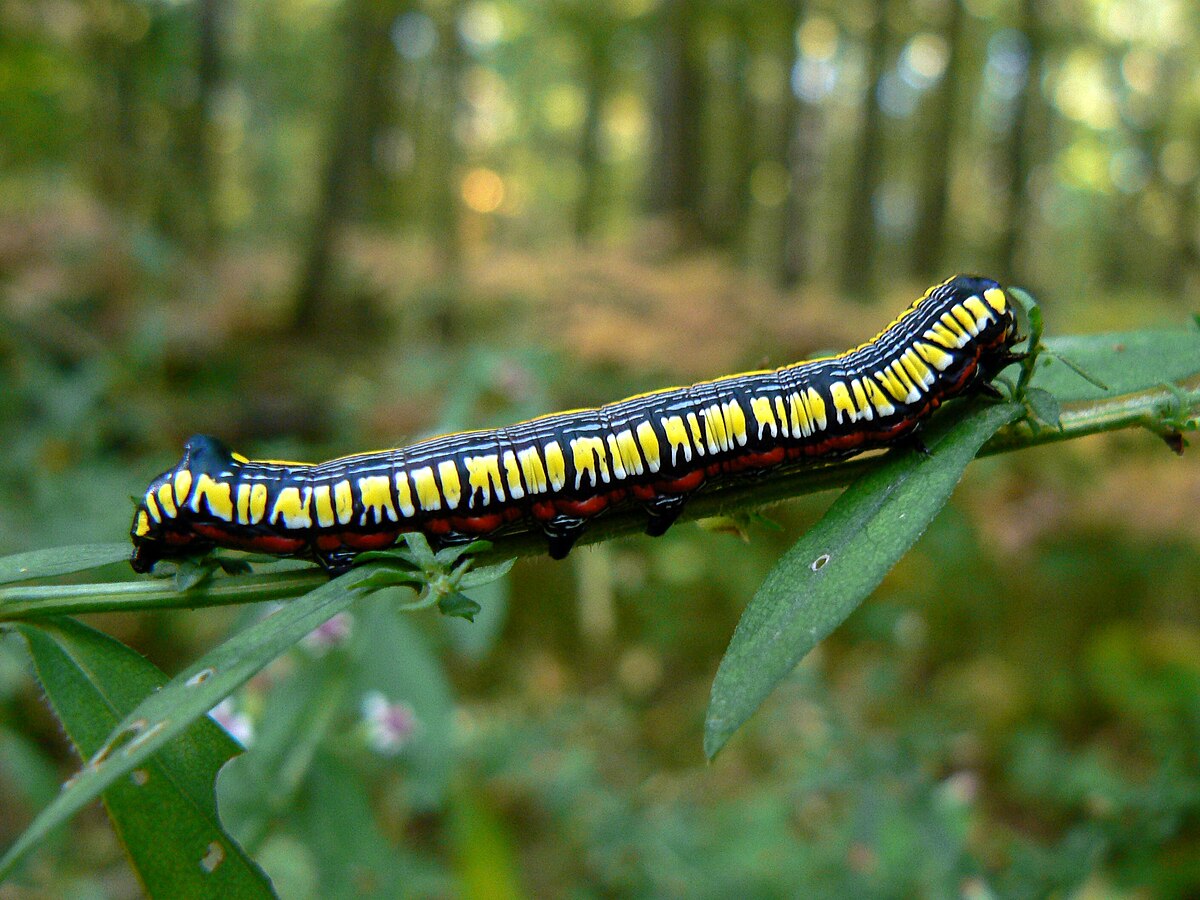
The Brown Hooded Owlet Striped Caterpillar bears a striking resemblance to the Zebra caterpillar but is distinguished by its brown head and brightly colored legs.
With yellow stripes adorning its black body, these caterpillars belong to the Noctuidae family.
They are often mistaken for their zebra-patterned counterparts, but careful observation reveals subtle differences in their patterns.
Typically measuring between 3 cm to 5 cm in length, they showcase a captivating transformation as they turn into moths or butterflies, featuring an array of mixed colors on their bodies.
While their thick, long hair may feel somewhat scratchy to the touch, they pose no harm to observers, making them a fascinating species to study.
11. Azalea Caterpillar
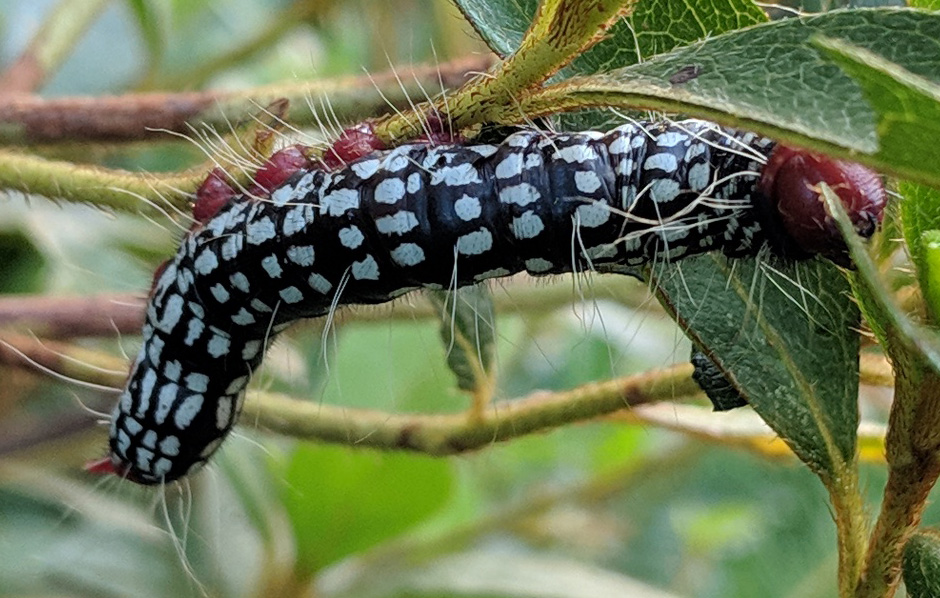
Azalea Caterpillars, scientifically known as Datana Major, exhibit distinctive features with a prominent round head and vibrant green stripes spanning their bodies.
These caterpillars are frequently found residing on Azalea plants, hence their name.
Often congregating in clusters, they feed collectively and can swiftly decimate Azalea leaves within minutes.
The coloration of Azalea caterpillars is a vivid mix of bright yellow and orange, creating an eye-catching appearance.
Although they are relatively small in size and tend to stay in one place while feeding, their presence can have a significant impact on garden foliage.
It’s advisable to observe them from a distance, as their thick bodies and coarse hair can cause irritation upon contact.
12. American Painted Lady Caterpillar
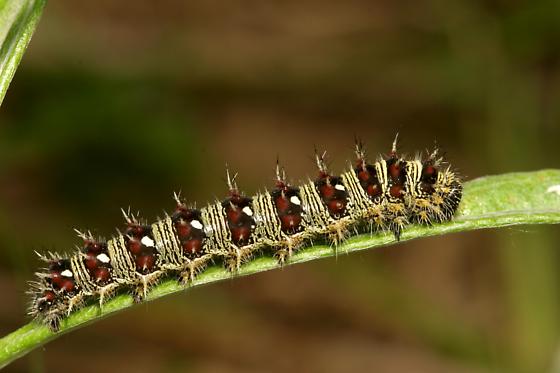
The American Painted Lady Caterpillar stands out with numerous horned spikes adorning its body, accompanied by either white or dark yellow bands.
What truly distinguishes this caterpillar is the abundance of dots and a dark band running along its form.
Furthermore, they boast branched spines, a feature not commonly seen in other caterpillar varieties.
These characteristics make it relatively easy to identify the American Painted Lady Caterpillar.
As they undergo metamorphosis into butterflies, these caterpillars exhibit an exquisite transformation, displaying an array of colors on their bodies.
Observers can appreciate their unique appearance and intriguing lifecycle, all while knowing that these caterpillars are harmless and captivating subjects for study.
Conclusion
In conclusion, caterpillars, the larval stage of butterflies and moths, are captivating creatures with diverse appearances, behaviors, and habits.
Black Caterpillar with Green Stripes, in particular, are easily recognizable and can be found in gardens and natural environments.
These small, beautiful creatures exhibit vibrant colors, patterns, and distinct features that set them apart from one another.
The life cycle of a caterpillar begins as an egg, and they transform into tiny larvae with striking colors and patterns, including orange and yellow hues, adorned with beautiful stripes.
Their thick hair and spines contribute to their unique appearance.
While some caterpillars are relatively passive, primarily feeding on flower nectar, others are more active, moving from one flower to another in search of food.

